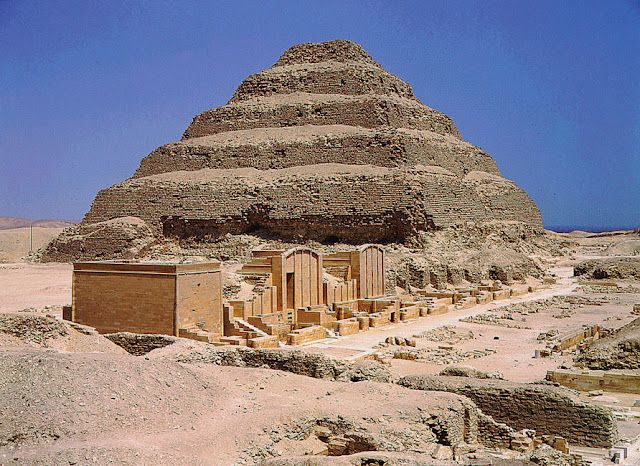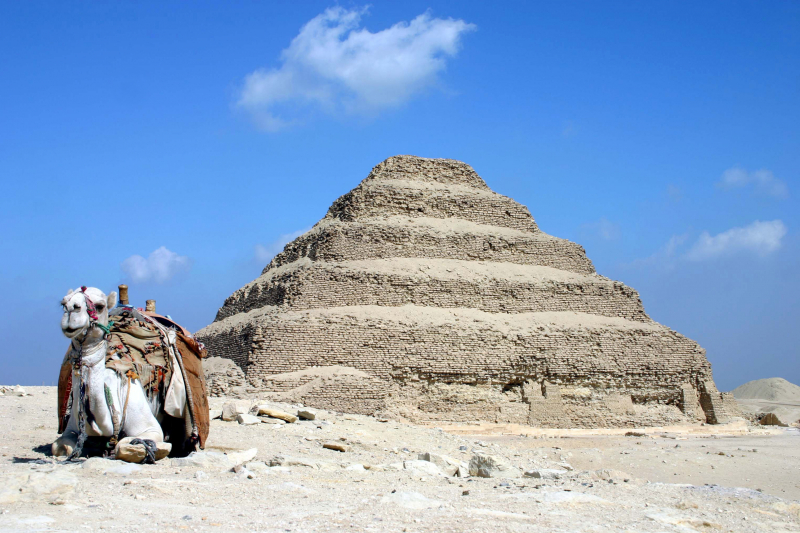Construction of the Step Pyramid at Saqqara
An old Egyptian pharaohs' burial site is referred to as "Saqqara" in Arabic. This is why the Step Pyramid was constructed; it was the Pharaoh Djoser's tomb. It is the original Egyptian pyramid building.
The Step Pyramid was built under the supervision of Imhotep, a top official under Djoser who passed away in the 27th century BC. Six steps, or mastabas, are placed on top of one another and becoming smaller as they go up the design. It resembles a staircase made of pharaoh tombs that leads to the gates of heaven, to put it another way.
The pyramid was first shaped like a square mastaba before becoming a rectangular pyramid. The entire building mixes in with the perimeter wall. The base of the original design, according to archaeologists, spanned 109 x 125 meters and measured 62 meters. After completion, limestone was used to cover it.
A substantial wall surrounds the pyramid and creates a roomy courtyard with a carved entrance. The pharaoh's remains were interred in a sizable hall that was built on the south-eastern side. Also constructed were a few more structures for the pharaoh's use in the afterlife. A 40-meter trench that surrounds the entire structure served as additional defense. The passageways inside create a number of mazes that serve as a deterrent to tomb thieves. The Step Pyramid is recognized for its outstanding architecture and is a crucial component of Egyptian culture.









